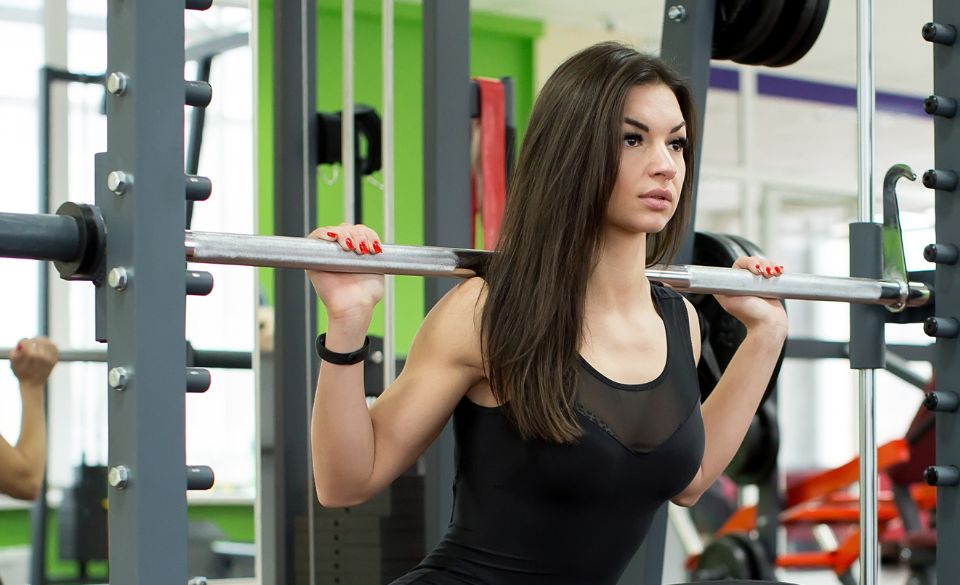
Get Stronger Legs with Smith Machine Reverse Lunge
Page Contents
Are you looking for a lower body exercise that can help you build strength and endurance while also targeting multiple muscle groups? Look no further than the Smith machine reverse lunge! This exercise is a great way to challenge your leg muscles, improve your balance and coordination, and boost your overall fitness level. In this article, we’ll take a closer look at what the Smith machine reverse lunge is, how to perform it correctly, and the many benefits it offers.
What is a Smith Machine Reverse Lunge?
The Smith machine reverse lunge is a variation of the traditional lunge exercise that utilizes a Smith machine. It’s an excellent way to target multiple lower body muscles while also improving your balance and coordination. Unlike the traditional lunge, where you have to maintain your balance and control throughout the movement, the Smith machine adds extra stability and control, making it easier for beginners to perform the exercise safely and correctly.
This exercise is an effective way to build overall leg strength and endurance, as it targets the quadriceps, hamstrings, glutes, and calves. It also challenges your balance and coordination, making it an excellent exercise for improving your overall stability and reducing your risk of falls and injuries. Plus, since it engages several upper body muscles, including the core muscles, back muscles, and shoulders, it can help improve your overall upper body strength and stability.
If you’re looking for a lower body exercise that can help you take your fitness to the next level, the Smith machine reverse lunge is definitely worth trying. Just be sure to start with light weights and focus on maintaining proper form and control throughout the movement to avoid any injuries. With consistent practice and dedication, you’ll soon see improvements in your lower body strength, endurance, and overall fitness level.
How To Do a Smith Machine Reverse Lunge
Performing a Smith machine reverse lunge is an excellent way to challenge your lower body muscles and improve your balance and coordination. Here’s how to do it step by step:
1. Set up the Smith machine: Adjust the bar to a height that allows you to grasp it while standing with your feet shoulder-width apart. Place a step or platform behind you to step onto.
2. Step onto the platform: Step onto the platform with one foot and lift your other foot off the ground.
3. Grasp the bar: Grasp the bar with both hands and hold it against your hips. Ensure that your grip is comfortable and secure.
4. Lower your body: Begin the movement by lowering your body down into a lunge position, with your front knee bent at a 90-degree angle and your back knee almost touching the floor.
5. Push back up: Push back up to the starting position and repeat the movement with your other leg.
6. Repeat: Aim for three sets of 10-12 reps per leg, resting for 30 seconds to a minute between sets.
It’s essential to maintain proper form throughout the movement to avoid any injuries. Keep your core engaged, your chest up, and your back straight throughout the exercise. Also, be sure to keep your knees aligned with your toes and avoid letting them cave inward. Start with lighter weights until you feel comfortable with the movement, and then gradually increase the weight as you become more confident and stronger.
Benefits of Smith Machine Reverse Lunges
Here are some of the benefits of adding Smith machine reverse lunges to your workout routine, backed by scientific research:
Builds lower body strength: One of the most significant benefits of Smith machine reverse lunges is that they target multiple lower body muscles, including the quadriceps, hamstrings, glutes, and calves. A study published in the Journal of Strength and Conditioning Research found that the Smith machine lunge was more effective at activating the quadriceps than the traditional lunge, making it an excellent exercise for building lower body strength.
1. Improves balance and stability: Since the Smith machine adds extra stability and control to the movement, it can help improve your balance and coordination. A study published in the International Journal of Sports Medicine found that performing lunges with the Smith machine improved balance and stability compared to performing lunges with free weights.
2. Reduces the risk of injury: The Smith machine reverse lunge is a safe and effective exercise that offers less risk of injury than traditional lunges, as the bar provides additional support and control. A study published in the Journal of Orthopaedic and Sports Physical Therapy found that lunges performed on a Smith machine resulted in less knee stress and higher quadriceps activation than traditional lunges, reducing the risk of knee injuries.
3. Increases calorie burn: Like most compound exercises, the Smith machine reverse lunge burns a significant number of calories, making it an excellent addition to any weight loss or fat loss program. A study published in the Journal of Sports Science and Medicine found that performing lunges with the Smith machine burned more calories than performing lunges with free weights.
What Muscles Does the Smith Machine Reverse Lunge Work?
The Smith machine reverse lunge is a compound exercise that targets multiple lower body muscles, making it an effective exercise for building strength and muscle mass. Here are the primary muscles that the Smith machine reverse lunge targets, backed by scientific research:
Quadriceps: The quadriceps, or quads for short, are a group of four muscles located in the front of the thigh. They are responsible for extending the knee joint and straightening the leg. A study published in the Journal of Strength and Conditioning Research found that the Smith machine reverse lunge was more effective at activating the quadriceps than the traditional lunge, making it an excellent exercise for building quad strength.
Glutes: The glutes, or buttock muscles, are the largest muscle group in the body and are responsible for hip extension, rotation, and abduction. A study published in the International Journal of Sports Medicine found that performing lunges with the Smith machine activated the gluteus maximus (the largest glute muscle) to a greater extent than traditional lunges.
Hamstrings: The hamstrings are a group of muscles located at the back of the thigh and are responsible for knee flexion and hip extension. A study published in the Journal of Orthopaedic and Sports Physical Therapy found that the Smith machine lunge activated the hamstrings to a greater extent than traditional lunges, making it an effective exercise for building hamstring strength.
Calves: The calves are a group of muscles located at the back of the lower leg and are responsible for plantar flexion (pointing the toes) and dorsiflexion (lifting the toes). A study published in the Journal of Sports Science and Medicine found that the Smith machine reverse lunge activated the calf muscles to a greater extent than traditional lunges, making it an excellent exercise for building calf strength.
In conclusion, the Smith machine reverse lunge is an excellent exercise for targeting multiple lower body muscles, including the quadriceps, glutes, hamstrings, and calves. By incorporating this exercise into your workout routine, you can build strength and muscle mass in your lower body, improving your overall fitness and athletic performance. However, as with any exercise, it’s essential to start with lighter weights and focus on maintaining proper form and control throughout the movement to avoid any injuries.


